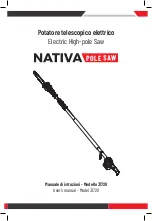
MITER SA
WS
MITER SA
WS
Visit www.americanwoodworker.com for a complete list of manufacturers, models and costs.
A m e r i c a n Wo o d w o r k e r
2003 TOOL BUYER’S GUIDE
69
“left-hand friendly.”We recommend trying both to see what’s
comfortable for you.
Blade Size and Tooth Count
A 10-in. blade is the way to go. Bigger blades yield modest
capacity increases for a big price. For carpenters who need to
cut 45-degree angles on a 2x8, the bigger blades may be worth
the extra cost.Also pay attention to the tooth count of the blade
that comes with the saw.A 40-tooth, 10-in. combination blade
is great when you’re framing walls, but not so good for fram-
ing photos. Plan on spending another $50 if you need to buy a
high-tooth-count blade for your saw.
Quick-Acting Hold-Downs
Some saws come with hold-downs to aid in cutting large stock.
Quick-acting hold-downs are best.They work like toggle clamps
so it’s a snap to secure material to the saw.Hold-downs that work
on a screw thread, like a C-clamp, are more poky.
Two-Way Bevel Setting
If you’re considering a compound miter saw, go for one that
bevels both left and right. It’s something no tablesaw or radial-
arm saw offers and, because you can work from either side of
the saw, it makes it much easier to do compound cutting. An
easy-to-read bevel indicator is also important.






















